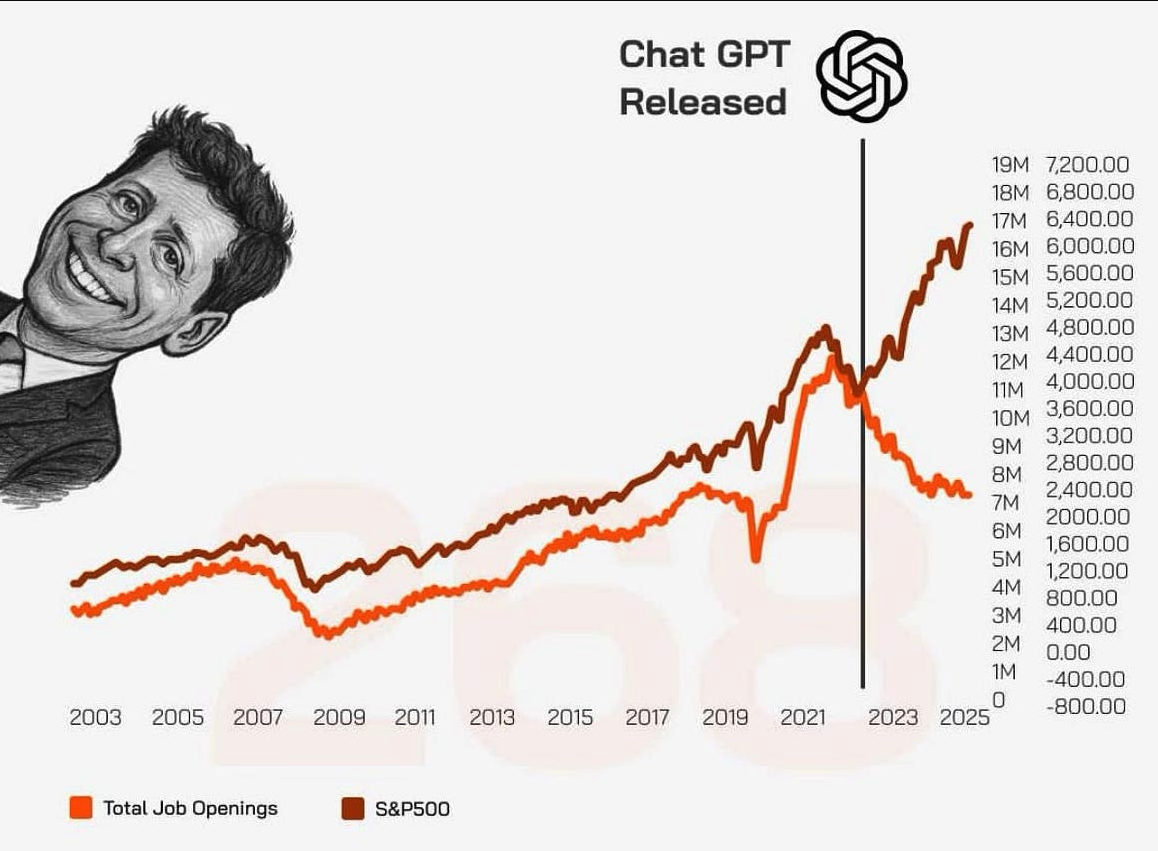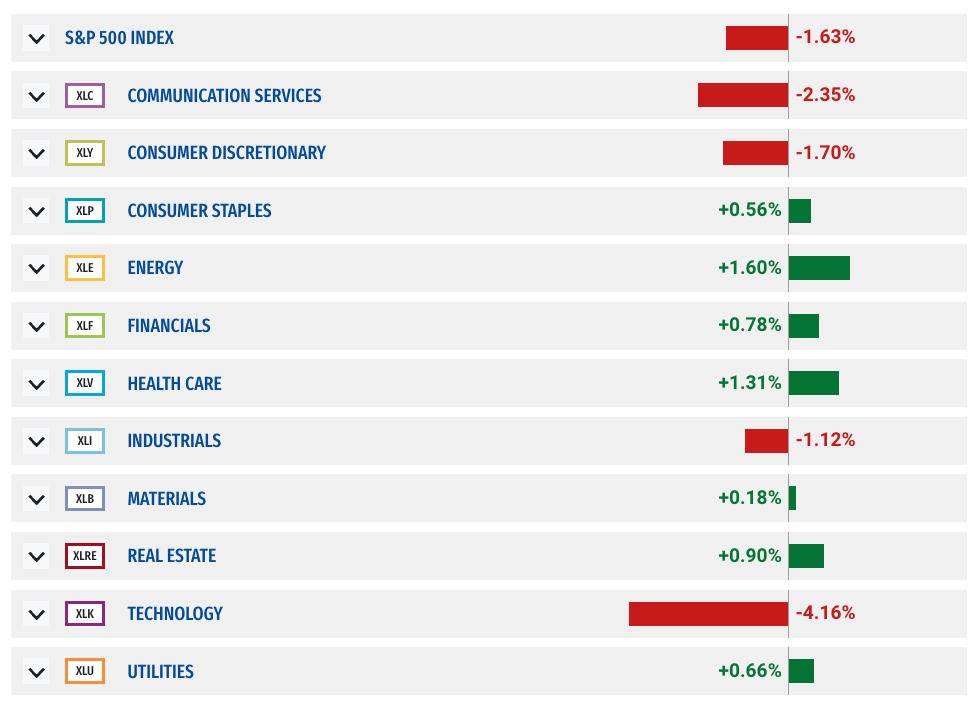


L2 Weekly Stock Market News Analysis
November 9th, 2025

TLDR:
Consumer Confidence Tanks: The University of Michigan’s consumer sentiment index dropped to 50.3 in November — the second-lowest reading ever recorded — as the historic government shutdown stoked fears over the economy and household finances. Current conditions hit an all-time low, and expectations are back at mid-2022 levels. The only group still feeling upbeat? Households with significant stock market exposure — up 11% in confidence thanks to rising equities.
Shutdown Drags On: With Washington gridlocked, federal data flow remains frozen. The lack of reliable economic updates is now feeding into sentiment, business expectations, and Fed uncertainty.
Burry Bets Against AI Kings: Michael Burry added major put positions against Nvidia and Palantir, questioning whether AI leaders are priced for perfection just as tech valuations are coming under scrutiny.
Stocks Shake Off Early Losses: U.S. equities rebounded into Friday’s close on hopes of a political breakthrough. The S&P 500 and Dow Jones rose 0.3%, though the Nasdaq lagged as big AI names stayed under pressure. Defensives like Exxon, Coca-Cola, and T-Mobile gained over 2%, while Tesla slid 4% and Meta and Oracle both fell 2% amid renewed valuation concerns in the AI trade.
Bubble Watch: PLTR, NVDA, and the Return of Burry
Palantir’s 13% post-earnings drop was enough to reignite “AI bubble” talk across financial media — and this time, it wasn’t just headlines. Michael Burry, famous for calling the 2008 housing collapse, made a notable move: he added put positions against Palantir and Nvidia, two of the most durable names in the AI ecosystem.
When Burry steps in to bet against the leaders — not the laggards — it raises a real question:
Are we seeing the first cracks in the AI trade — or just a shakeout before another leg up?
What We Learned: AI Is Real — So Are Valuation Risks
There’s no question anymore about whether AI is real or meaningful.
The data is undeniable:
- AI now powers $109B in private U.S. investment
- There are 400+ AI unicorns globally
- 71% of enterprises are already using AI in core functions
- 89% of small businesses now rely on AI tools
- The global AI market is on pace to reach $826.7B by 2030
The issue isn’t whether AI delivers impact — it clearly does.
The question now is how much is already “priced in”:
- Just 10 stocks (Mag 7 + PLTR, ORCL, AVGO) drove 80% of S&P 500 gains this year
- AI-linked names now account for a record share of future GDP expectations
- Their valuations assume smooth scaling, perfect execution, and constant capital access
That’s the backdrop for Michael Burry’s move: large put positions against Nvidia and Palantir. Not because he doubts AI itself — but likely because markets may be acting like nothing can go wrong.
It's not about AI being a bubble — it’s about valuations expecting a future with zero friction.
Which raises the real question:
What happens when AI’s exponential growth hits real-world constraints — whether that’s economic strain, political pressure, or physical limits?

Politics Meets Productivity: Enter Zohran Mamdani
Back in June, we warned:
“Mamdani’s primary win shattered the political firewall around capital’s dominance in New York real estate. That wasn’t ideological — it was economic.”
His rise didn’t come out of nowhere. It reflects a growing economic tension that millions of younger Americans now face:
- Rents are up
- Wages are flat
- Debt is constant
- And now AI is taking aim at the jobs they usually start with
The data:
- Entry-level job postings are down 32% since ChatGPT launched
- 40% of employers say they expect to reduce headcount due to AI
- 76% of Gen Z worries they’ll be “locked out” of the job market
- Even Fed Chair Jerome Powell warns that AI could eliminate entire categories of entry-level work
Actionable angle: ServiceNow (NOW) stands to benefit as enterprises accelerate automation to replace both back-office and entry-level roles.


This is why the biggest policy wildcard in the 2025–2026 election cycle may not be inflation, immigration, or even taxes.
It may be Universal Basic Income (UBI) — not as a fringe idea, but as a mainstream response to AI-driven labor disruption and economic insecurity. UBI means everyone gets a basic, livable paycheck from the government, paid for by taxes on companies.
Here’s the clearest signal: 72% of Americans already support some form of UBI.
That includes:
- 83% of Gen Z
- 81% of Millennials
- 71% of Gen X
- Even a 58% majority of Baby Boomers
- 88% of Democrats, 72% of Independents, and more than half (53%) of Republicans
Why UBI May Come Back
Andrew Yang’s 2020 campaign made UBI a mainstream idea for the first time in modern U.S. politics. And it wasn’t just his message — it was his movement:
- Over 50% of his campaign donations came from small-dollar donors — a rarity in national politics and a clear sign that a broad base of everyday people saw UBI as a real answer to a collapsing social contract.
And what’s new is that this isn’t just an idea from the tech world anymore — it’s becoming a political response from the ground up, especially among younger voters and working-class renters who feel priced out and pushed aside.
That’s the real signal. UBI may return not because a politician makes it a central plank, but because AI is accelerating the economic conditions that make people demand it.The left is framing it as survival. The tech world framed it as inevitability. And the job market is now forcing it into the conversation whether Washington is ready or not.
Whether or not UBI becomes law, this shift matters. It shows how AI isn’t just reshaping markets — it’s reshaping political expectations, moving more voters toward redistribution, social protections, and post-work economics in ways that’ll define the 2025–26 cycle.
Why This Connects to the AI Build-Out
The story isn’t just “tech replaces jobs.” It’s that AI’s physical growth (chips, energy, cooling) is already colliding with economic and political limits.
- If AI delivers productivity gains but displaces labor too fast, the pressure for redistribution (UBI, tax shifts, public control) grows
- If AI stalls due to physical constraints — like power — the risk shifts from “not enough jobs” to “not enough capacity”
You can’t scale $2.9 trillion of AI capex if the power, water, or political will won’t support it.
That’s why we look at Mamdani + UBI and AI + water scarcity together:
- One is the political feedback loop. AI causes mass job loss = socialists elected
- The other is the physical bottleneck if AI burns through too much water
Both are limits on the same exponential curve. One hits society. The other hits infrastructure.

The Water Crisis That Could End the AI Boom
Everyone’s debating chips, power, and demand — but the real bottleneck to the AI build-out may be water.
- Data centers can use up to ~9 liters of water per kWh for cooling
- The U.S. grid generating that electricity withdraws ~43.8 liters per kWh
- Each AI query can consume the equivalent of 1–3 bottles of fresh water once you factor in cooling ($VRT) and power generation ($EME)
- AI water use is projected to reach ~6.6 billion m³ by 2027 — roughly the annual consumption of a small country
- Only ~3% of Earth’s water is fresh, and most is locked in ice
- Saltwater is highly corrosive to metals, and accelerates rust formation and degradation. Sea water use would rapidly deteriorate pumps, pipes, radiators, and other critical components of a cooling system, leading to expensive and frequent replacements. Specialized, corrosion-resistant materials are costly and require more complex maintenance.
- 1.1B people already lack clean water, and 2.7B face water scarcity at least one month a year
- Nearly half the world may face severe water stress by 2030
This isn’t a niche ESG story — it is a real physical constraint on AI scaling.
And the timing just showed up in earnings:
- American Water (AWK) posted strong Q3 results
- Announced a merger with Essential Utilities (WTRG)
- Laid out a $19–$20B capex plan for 2026–2030 and $46–$48B through 2035
That is the first big, public signal that U.S. water infrastructure spending is about to collide with AI’s cooling demand.
If water becomes the gating factor — not chips, not power — then the trade shifts to water utilities, metering, reuse, and rights.
Investor Angle - Level 2 Exclusive Breakdown
Water Treatment & Purification
- WAT – Lab-grade testing and analytics
- XYL – Advanced systems for wastewater reuse and treatment
- ECL – Industrial water chemistry solutions
- GE Vernova spinout (projected 2026) – Desalination/turbine-water tech potential
Reuse & Recycling (Zero-Liquid Discharge, Onsite Systems)
- AQUA – Evoqua (now part of Xylem) focused on industrial reuse
- CDZI – Cadiz Inc. (water conveyance + desert supply reuse)
- CLW – Clean Harbors-like industrial cleanup players (waste-to-water tech adjacency)
Leak Detection & Smart Infrastructure
- Itron (ITRI) – Smart metering, leak monitoring
- Trimble (TRMB) – Geospatial sensing for water system mapping
- Badger Meter (BMI) – Water metering and pressure intel at scale
Engineering & EPC for Water + Data Center Siting
- ACM – AECOM (large-scale desalination, wastewater, and data center planning)
- TTEK – Tetra Tech (high-end water consulting + reuse system design)
- Jacobs (J) – Water-energy-data projects globally
Regulated Utilities Scaling for AI Demand
- AWK, WTRG, AWR – Largest U.S. regulated water utilities, strong rate-base plans
- PCG – Power + water constraints around large AI campuses in California
- Watch for utilities that file for “AI/Data Center” usage tariffs or non-potable cooling zones — early signs of where data + water will collide
Last's Weeks Sector Winners & Losers
Tech, semiconductor, and software stocks took the biggest hits last week while energy, healthcare, and financials rose slightly as investors rotated out of high priced momentum stocks into value plays. Among the industries, the biggest winners were insurance, solar, oil drilling, and gas pipeline stocks.

Upcoming Events This Week
The ongoing U.S. government shutdown — now the longest in history — is set to delay official economic data releases, shifting attention to private-sector sources instead. This week, markets will look to ADP’s employment report and the NFIB Small Business Optimism Index for clues on labor and business sentiment. Abroad, the UK will release GDP and labor market figures, while the Eurozone posts industrial production data. In Asia, investors will be watching China’s major data dump on industrial output, retail activity, property trends, and credit flows, alongside fresh GDP estimates out of Japan. Meanwhile, earnings season is winding down but still features notable names — Cisco, Disney, and Applied Materials in the U.S., and Tencent, Alibaba, SoftBank, Sony, Siemens, Munich Re, and Allianz across global markets.
.png)

Company News
LevelFields AI Stock Alerts Last Week
TGE Soars 130% on Buyback News
The Generation Essentials Group (TGE) surged 130% in a single day after announcing a $5 million share repurchase program authorized by its board. The buyback, which runs through January 31, 2026, may be executed through open market purchases, negotiated deals, block trades, or other permitted methods under SEC rules. TGE joins a growing list of companies turning to buybacks as a way to boost shareholder value and stabilize liquidity amid volatile markets.
Cameco (CCJ) +23% on $80B U.S.–Westinghouse Nuclear Deal
Cameco Corporation (CCJ) surged 23% in one day after the U.S. signed an $80 billion agreement with Westinghouse to jointly expand global nuclear fuel supply. Shares of both Cameco and Brookfield jumped on the news, reinforcing nuclear’s critical role in energy security and AI-era power demand


We’ve just launched the new LevelFields Portfolio platform — a centralized dashboard built for active investors and wealth managers to track their trades, organize trade ideas, and monitor real or prospective portfolios.
We've replaced Excel and Google Sheets trade tracking with software that updates as prices and valuations of stocks change, so you don't lose money by missing great entry and exit points.
You can try it for free!
What it does:
- Lets you add both real positions and idea-stage trades into one unified portfolio.
- Tracks allocation, profit/loss, KPIs, P/E, price targets, and thesis notes in one place.
- Allows you to set real-time alerts on valuation changes, price moves, and price targets using bulk editing (e.g. one alert for all holdings).
- Lets you toggle any ticker between “Idea → Holding → Closed” while preserving the original trade thesis and exit notes.
- Designed for traders, advisors, and fund managers who need a live, organized view of positions + rationale, not just a static spreadsheet of tickers.
- Import CSV file of existing ideas, notes, and portfolio holdings for a quick start
- Keep track of reasons you bought and sold to analyze your performance and for compliance
- Design your own model portfolios based on allocations, sector, and industry




.png)
How to use LevelFields for Options Trading
Top Quantum Computing Stocks to Watch in 2026
The Greatest Trades of All Time!
What's LevelFields' Premium Membership Provide?

This is not financial advice. All information represent opinions only for informational purposes. Given the vast number of stocks we cover in these reports, assume staff covering stocks have positions in stocks discussed.
Have feedback or a request for specific data? Drop us a note at support@levelfields.ai


